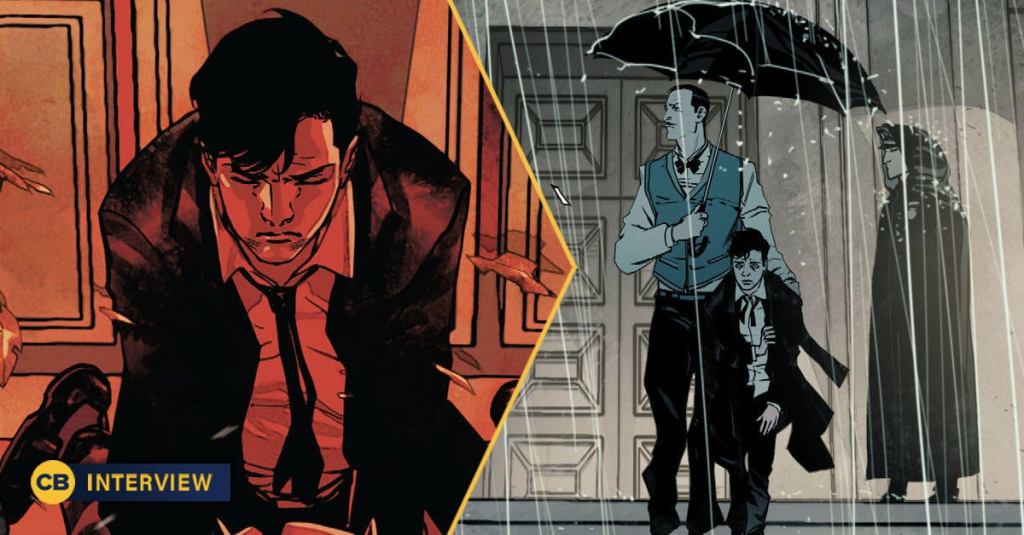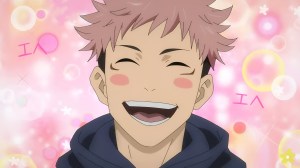DC Comics is taking fans back to the origins of the Dark Knight, and while it is one of the most well-known origin stories in comics (or pop culture media for that matter), Batman: The Knight has found a fresh perspective to explore the evolution of a grieving son into the hero we know so well today. At the helm of the new series are writer Chip Zdarsky, artist Carmine Di Giandomenico, colorist Ivan Plascencia, and letterer Pat Brosseau, and ComicBook.com recently had the chance to speak to Zdarsky all about the first issue, including Alfred’s approach to parenting, Bruce’s struggles with anger, the involvement of a major DC villain, and more! Now, spoilers do follow, so if you haven’t read the issue yet you’ve been warned.
Videos by ComicBook.com
It’s immediately apparent that this is not the typical Bruce and Alfred dynamic we’ve seen represented over the years. Going from being Bruce’s butler to his lone parent isn’t an easy transition to make, and that makes the dynamic between them a bit volatile.
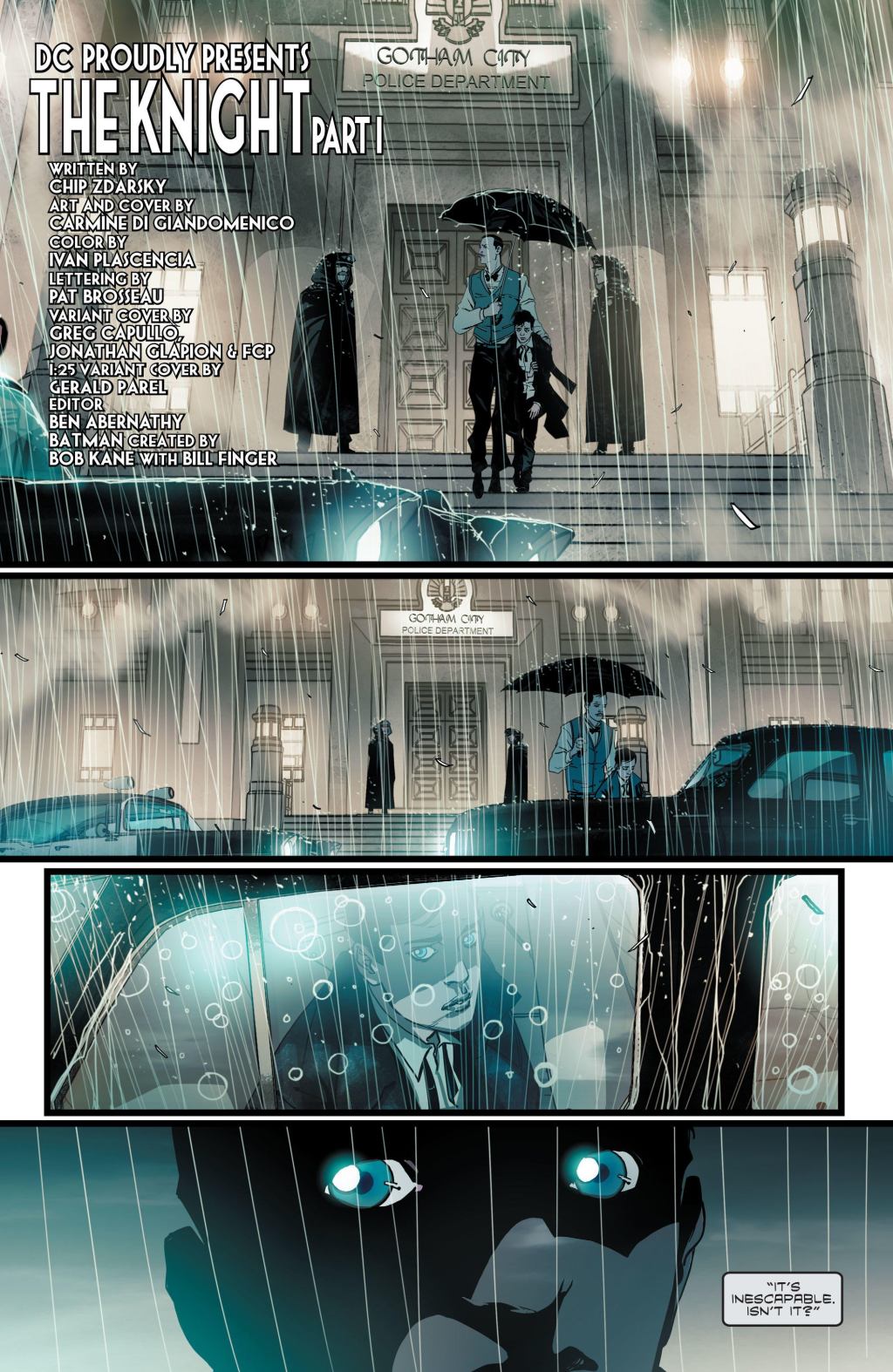
“It’s so tricky for Alfred,” Zdarsky said. “To be thrust into this father figure role while also being, literally, Bruce’s butler. What are the boundaries there? How much guidance can he give Bruce, a young man who’s so driven and seemingly self-destructive? At what point does Alfred say, ‘enough’ to his unusual indulgences? I really love writing Alfred. Shame he’s DEAD.”
Yeah, think everyone’s still kind of bummed about that. As for Bruce, The Knight gives us a rare chance to see Bruce attempt to deal with his grief and loss before he becomes the world’s greatest detective. We know the broad strokes of that journey, but Zdarsky hopes to tie together some of those smaller connections to paint an accurate picture of Bruce’s journey towards destiny.
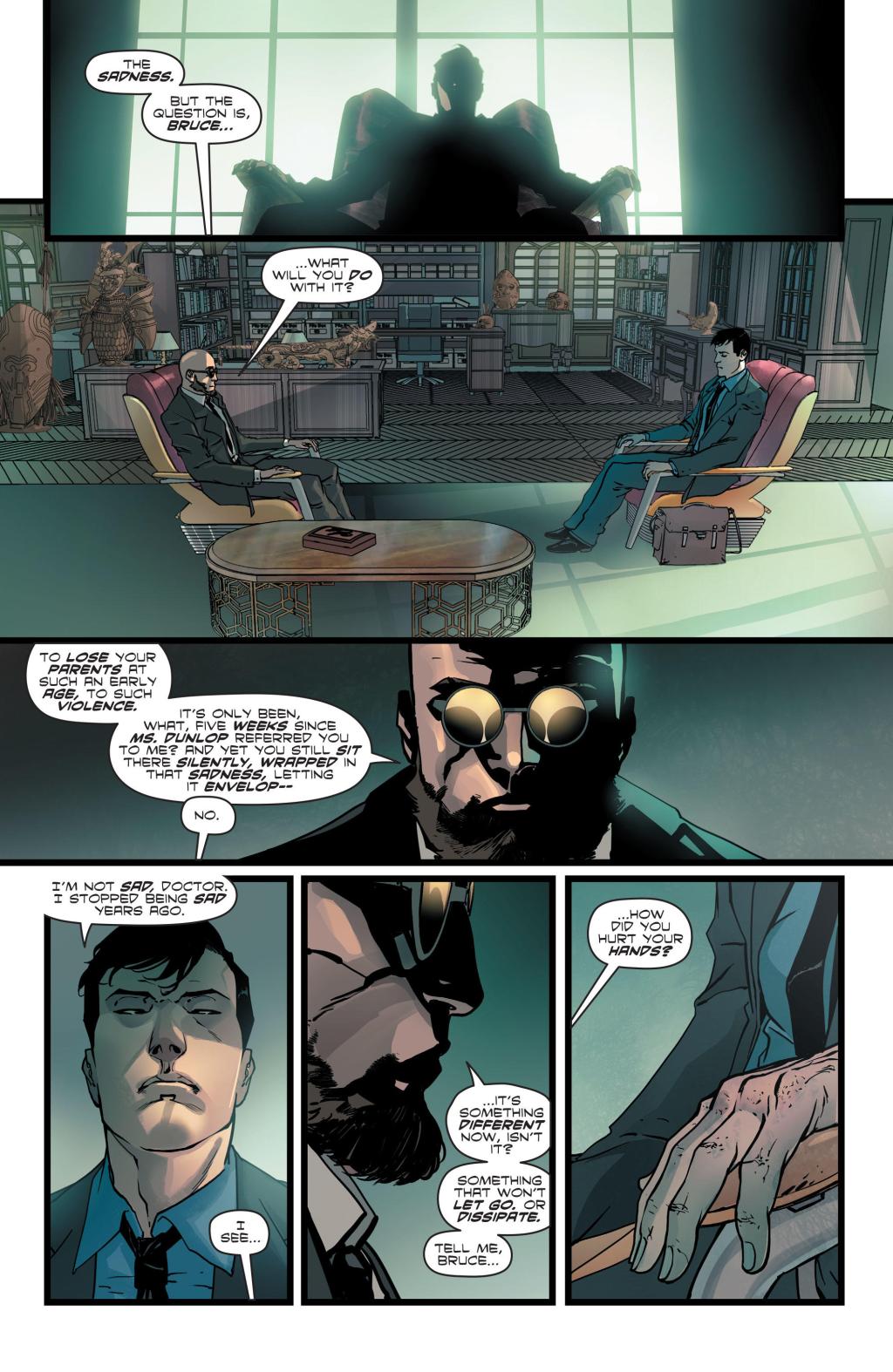
“I think we’ve seen bits and pieces of what brought him from point A to point B, but here we’re trying to make those connections through one large story,” Zdarsky said. “To really show how he goes from the slightly lost kid to his return to Gotham with concrete ideas as to what needs to happen, who he needs to be.”
Another way the series explores this challenging period of Bruce’s life is through the eyes of his friend and later girlfriend Dana, and while Alfred might be his guardian and father figure, Dana is the one who checks Bruce when he needs a bit of reigning in.
“I know Bruce had friends growing up (hi Tommy!), but I liked having Dana be a constant so she can call out Bruce on his problems. She’s not necessarily his conscience, but it’s hard for Bruce to see his position in society as a Wayne at this stage. Dana spotlights it,” Zdarsky said. “She’s in his mind during the series, but her biggest impact is definitely in issue one.”
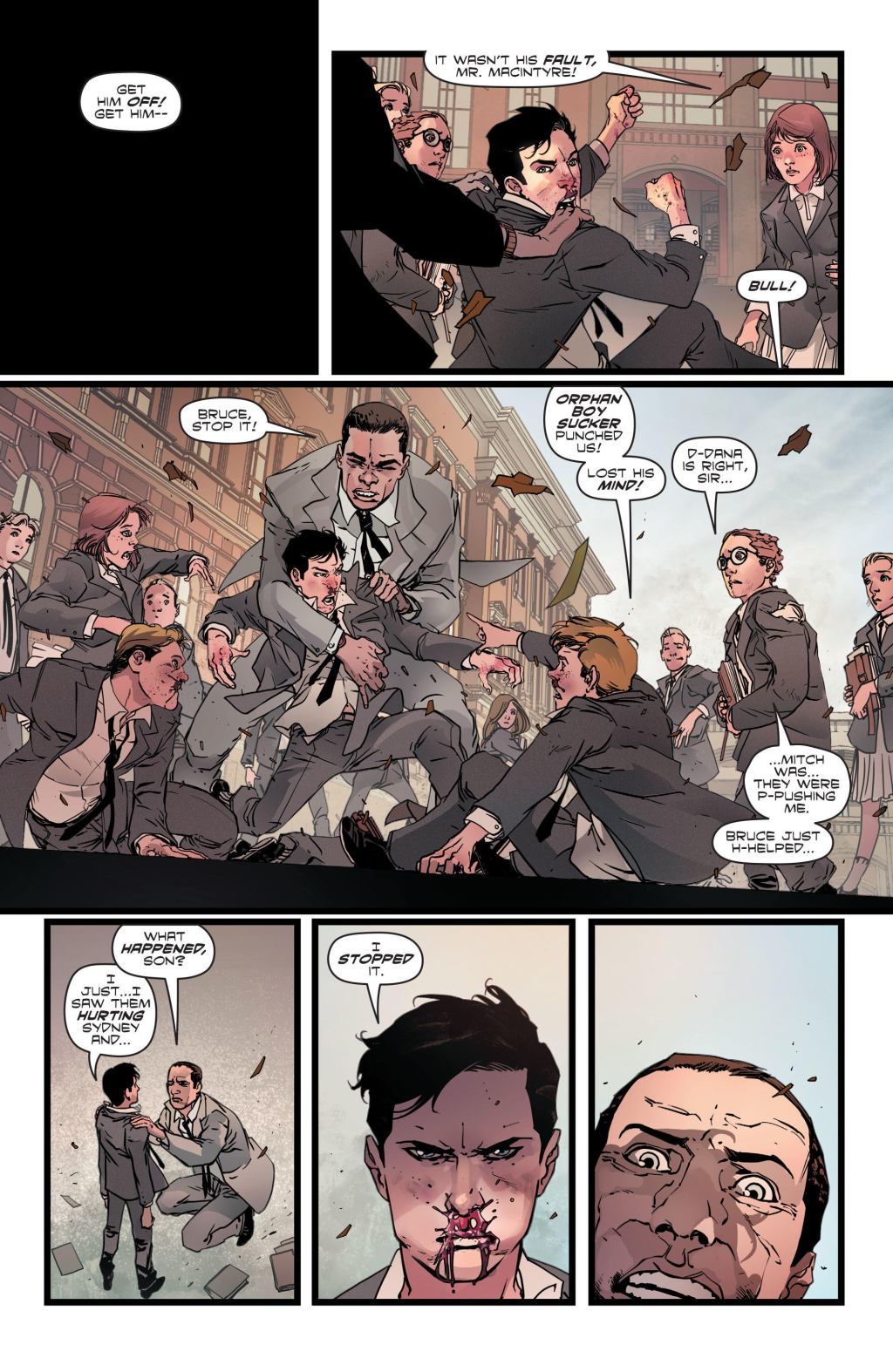
In fact, Dana is a part of two of my favorite scenes in the issue. The first is when Dana realizes that Bruce has been tormenting Mitch and there’s a cutaway to Bruce watching from the shadows as he is taken away. The second is a heartfelt and honest conversation between Dana and Bruce on the hood of a car, though there is also another stellar sequence between Bruce and Alfred in a car after Alfred picks him up from the police station. The artwork in all three is stunning, perfectly encapsulating the underlying anger, confusion, and love in each scene, and it’s all credit to Carmine Di Giandomenico and Ivan Plascencia.
“They’re both masters of mood! Seeing Carmine’s pages come in he clearly understands tone in a way a lot of artists don’t. His work is remarkable here and makes me really feel what Bruce is going through,” Zdarsky said. “Ivan puts a lot of thought into his palette, and each issue is more beautiful than the last. Knowing that they’re on this for the full ten issues makes me so relieved.”
A curveball early on is the involvement of Hugo Strange, who ends up being Bruce’s therapist, and there was no one more perfect for this moment in Bruce’s journey.
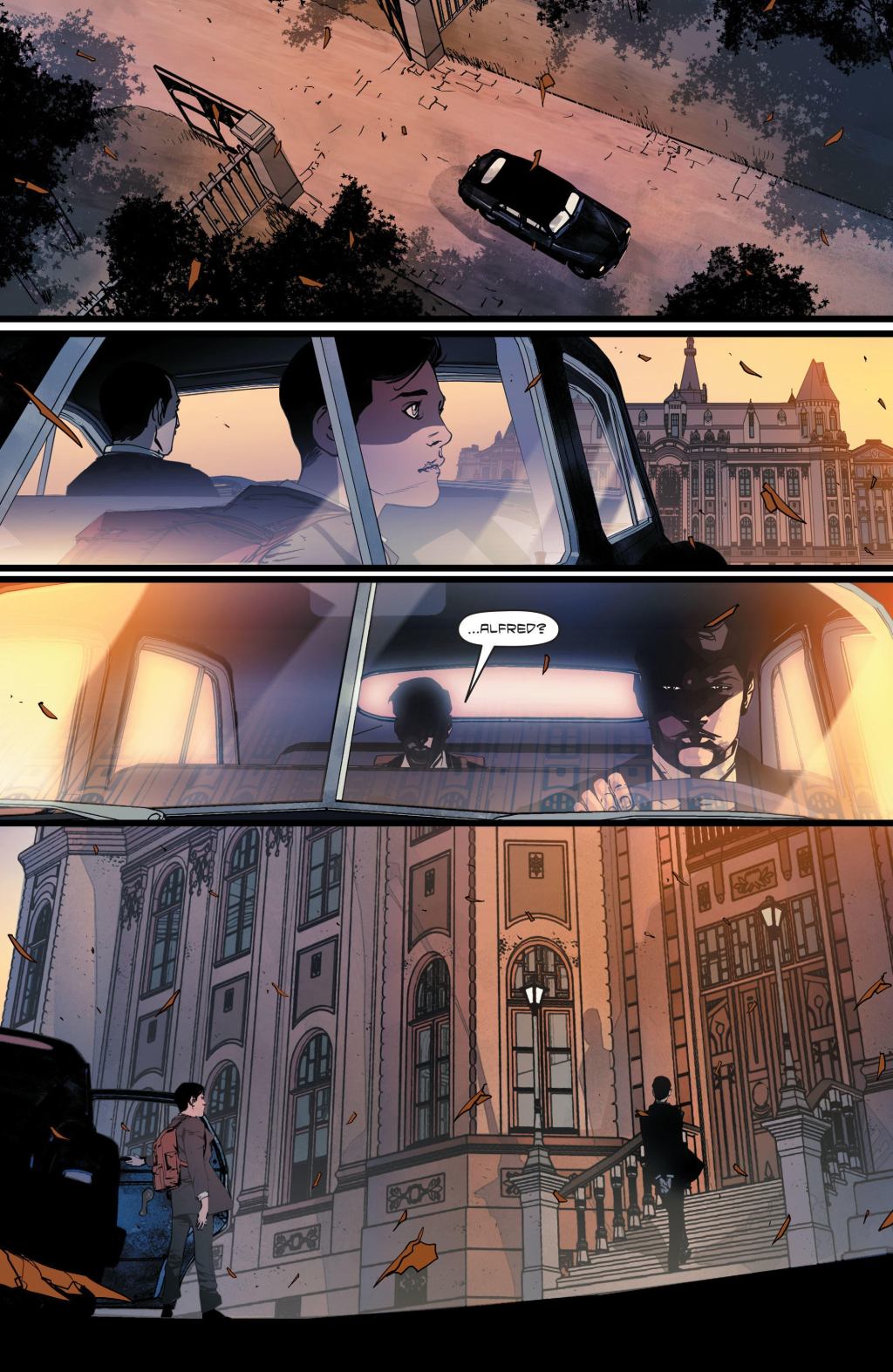
“It was always Hugo. Having him be teen Bruce’s therapist just made sense for our first issue,” Zdarsky said. “I didn’t want Bruce chasing the Penguin or punching Teen Bane, y’know? Having this be a battle of wits instead of a physical challenge works for this phase of his life.”
Zdarsky also talked a bit about how the series fits into Bruce’s established mythos, and everything featured in The Knight is part of Batman’s main continuity…except for maybe one small thing. “It is in continuity! I mean, look, coming from Marvel, DC has more wiggle room on the old continuity, yeah? But I tried my best to make sure that the past few years of stories still made sense with what we’re doing,” Zdarsky said. “There’s, I think, one continuity swerve which I felt bad about, because I feel bad about everything, but it’s pretty small, I swear! When issue seven comes out I’ll talk about it ha ha.”
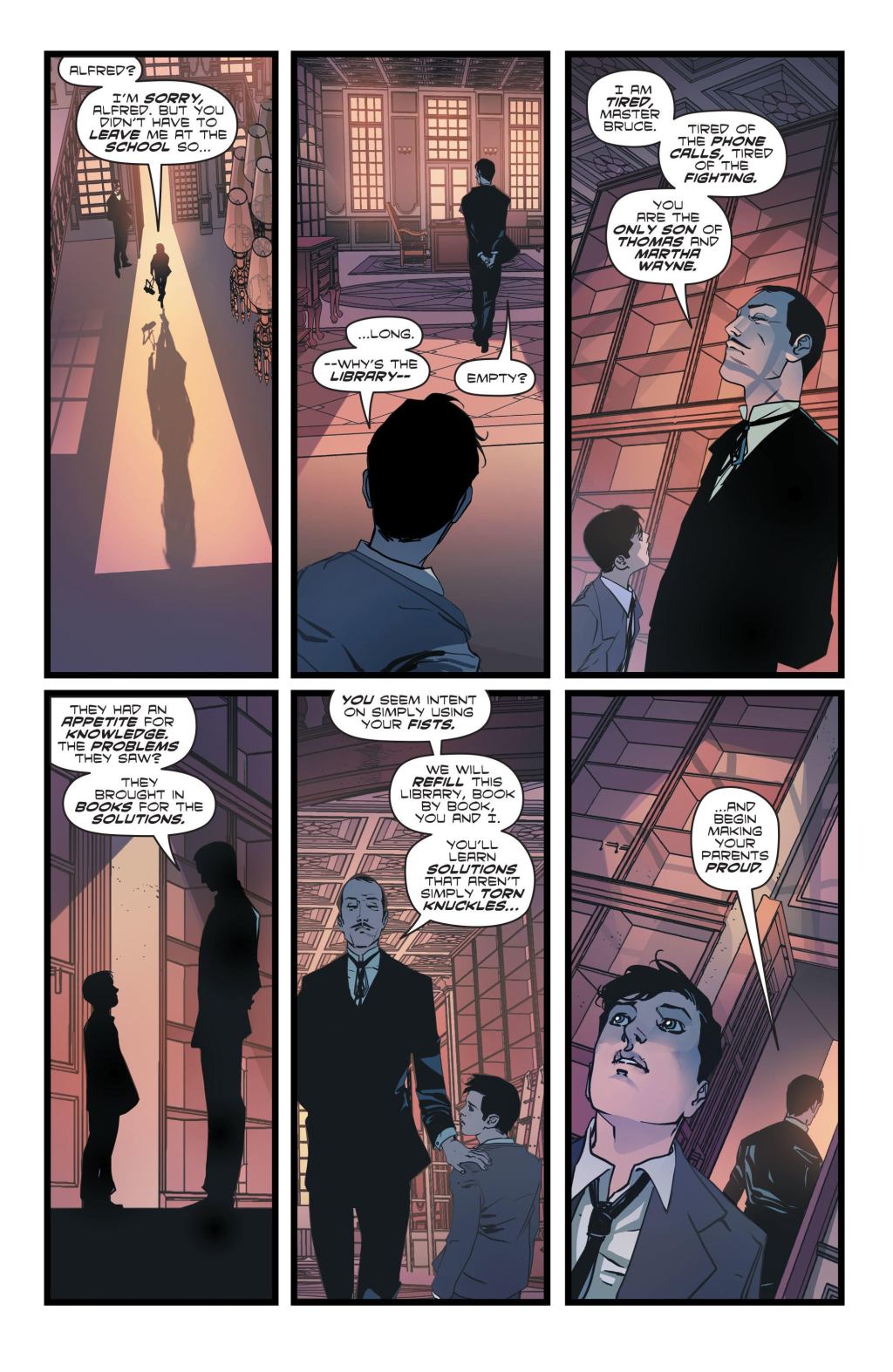
With a character as well known as Bruce Wayne, it can be difficult to find a new way to explore the character that hasn’t been done before. Batman: The Knight succeeds in this, but it was challenging to showcase Bruce’s growth from beginning to end while still keeping him true to the character fans known at this point in time.
“I suppose the big challenge has been to change him from the beginning of our story to the end. To have it work that our angry young Bruce can mature and figure out what he wants to become through our story,” Zdarsky said. “Making sure he’s recognizable as the Bruce readers know at each stage.”
Batman: The Knight #1 is in comic stores and on digital platforms right now.
What did you think of Batman: The Knight #1? Let us know in the comments and as always you can talk all things DC and comics with me on Twitter @MattAguilarCB!

